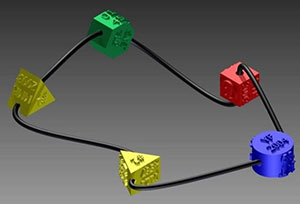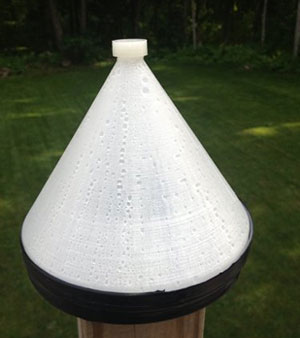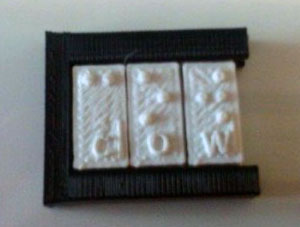Michigan Technological University has just announced the winners of its 3D Printers for Peace contest. Open for entries since the spring, the competition was conceived by Joshua Pearce — a 3D printing enthusiast and associate professor of materials science and engineering and electrical and computer engineering at MTU — who was concerned about the notoriety building around 3D printing technologies when the gun stories were at their height. “We wanted to celebrate designs that will make lives better, not snuff them out,” said Pearce. And so they have, if the top three placing 3D printed projects are anything to go by. Pearce thinks so too: “I’m really happy with the diversity of designs. They showcase the ability of the 3D printing community to benefit humanity.”

Van Tuyl is a master’s student in mechanical engineering at McMaster University, and has a biomedical background, which prompted him to focus on improving immunization rates in the developing world. “We have the capacity to immunize against many diseases, but it’s not getting accomplished,” he said. But he believes that putting easily interpreted medical records into the hands of the people could help and that is what VaxBeads is designed to do.
The judges were impressed with the design’s originality and practicality. “VaxBeads are a novel idea; no one has done anything like that yet,” said Pearce. “John demonstrated the ability of 3D printing to address a real need in the developing world. You could print beads fast enough to hand to children, and if they were to wear the necklace to the doctor’s office, it would be quick and easy to identify missing vaccinations.”


Meidinger, a mechanical engineering major at Arizona State University, started thinking about language after taking a sign language class in high school. “Braille is to the blind assign language is to the deaf, and braille is certainly not intuitive for a sighted person,” he said. “There are extremely expensive tools out there that aim to create braille on a computerized tablet, but I wanted to design something that would be simple and educational for a sighted person to use, and could be useful in many ways for non-verbal communication for the blind. Even if you can’t write braille, you can arrange tiles to spell out what you need to.”
Pearce expressed his thanks to all the 3D Printers for Peace participants. “All the open-source entries demonstrated the technical ability and promise of low-cost 3D printers to provide for humanity’s needs and advance the cause of peace.”
All the entries are now posted on Thingiverse.com and can be downloaded for free and printed by anyone with a 3D printer.



